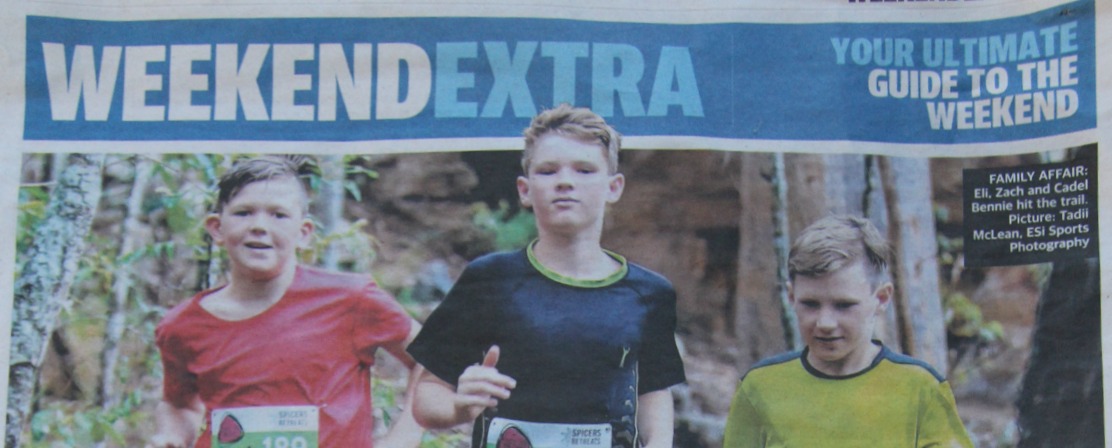Featuring: Sons of Adventure, Ipswich Trail Run Series, Naomi Ferstera
Run for the hills
Ditch the technology and get set to physically challenge yourself on a trail run, writes Michelle Collins.
The Bennie family of Boonah is blazing a new trail – taking to Facebook and Instagram with photos of their outdoor adventures to encourage other families to take time away from their television and computer screens.
The adventures of Zach, 12, Eli, 11 and Cadel, 9, hiking, camping and kayaking and just having fun outdoors are chronicled on Facebook (Facebook.com/SonsofAdventureAu) and Instagram (@sons_ofadventure) by mum Kate and dad Scott to inspire other families to spend time together, to challenge themselves and explore the world around them.
And their latest challenge is trail running.
On Sunday, the family of five will be taking part in the last round of the Ipswich Trail Run Series. Kate says trail running is great for kids – especially boys – because it’s more exciting than just pounding the pavement.
“It can be a real challenge to get the boys off wi-fi and away from technology and this is a fun way to enjoy nature, be challenged and stay fit,” Kate says.
“The fact that there is a sense of danger – it’s fast paced and they have to think quick to negotiate the trails – it has that element of risk involved that my boys find really exciting and love.
“The terrain is fairly steep and rocky, which is a big challenge when you are running quickly.”
Kate says it’s also a good workout. She likens it to the difference between cycling and mountain bike riding.
“If you ride on the road at 30km, for most cyclists that is easy,” she says, “But if you go on a mountain bike ride for 30km, it is a lot harder and seems a lot longer.
“Running 5km on the trails is much harder than running 5km on the road. It takes a lot more effort and no doubt, fitness as well.”
Beginners often start by walking the tracks or doing a combination of walking and running.
The Ipswich Trail Run Series includes a free community walk for those just starting out or who simply don’t think they are up to running.
“The good thing is you challenge yourself as much as you can,” Kate says.
“With the longer walks, people will often power walk up the hills and run down at high speed.”
Exercise physiologist Naomi Ferstera, from the Naomi Ferstera Group in Ipswich, agrees there are physical and physiological benefits to running on trails and says although it is an extreme sport, it is safe.
“Trail running involves whole body movement and engages core muscles as the runners are constantly changing direction and pace, twisting and turning, ducking tree branches, climbing and descending,” she says.
“Dirt and grass are softer surfaces and provide more cushioning than concrete or bitumen and can reduce the risk of common running injuries, making it better for growing bodies.
“It takes some of the pressure off your joints and, because it is on grass and soil, the movements aren’t so repetitive, so you can end up with less wear and tear on your joints.
“And you get fresh air and that is a huge plus, especially for kids.”
Naomi recommends beginnners start out slow.
“It’s harder than running on a hard surface because you are using more muscles,” she says.
“Do a bit of walking or jogging first and be careful you don’t fall in a hole or trip over something.”

